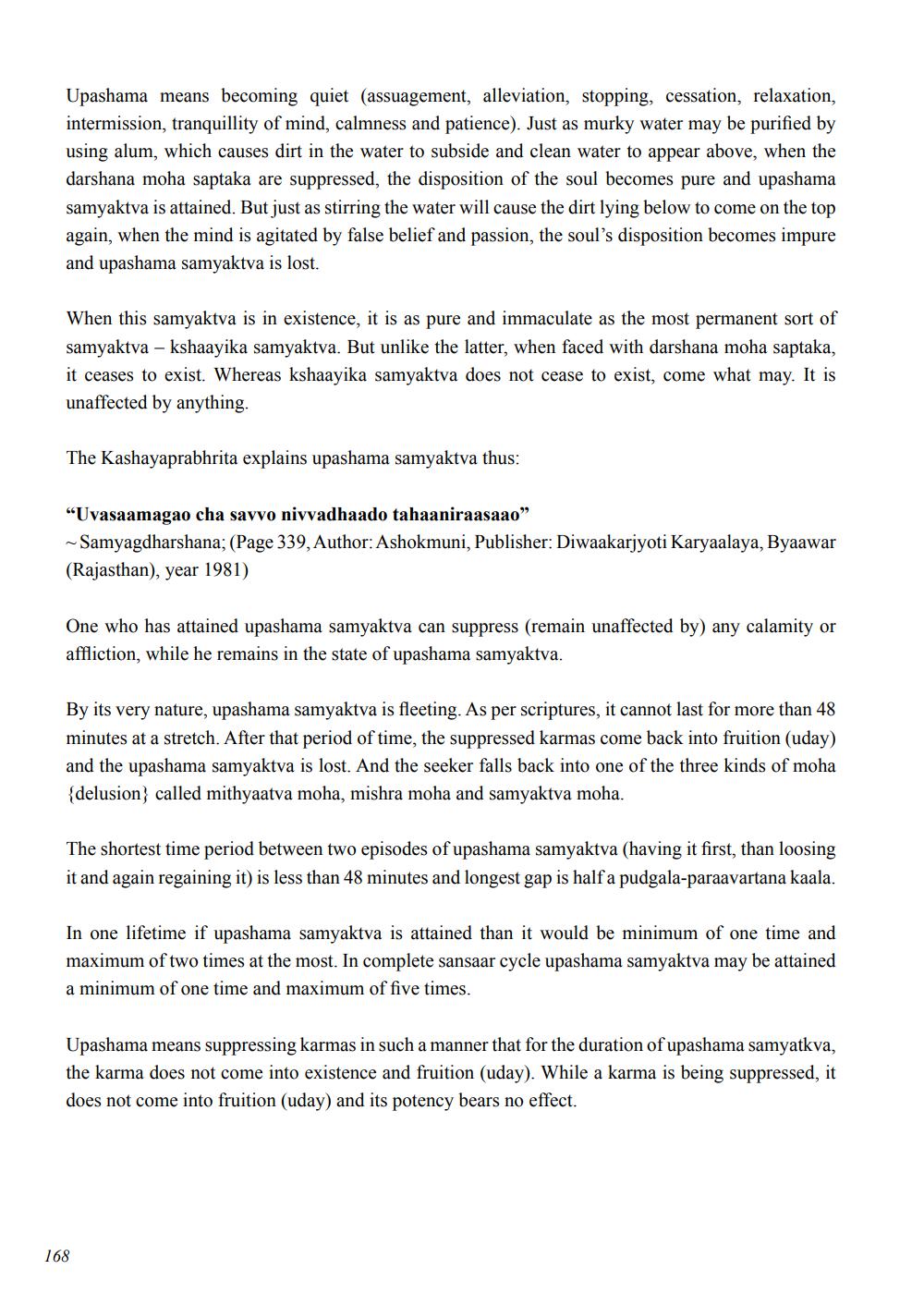________________
Upashama means becoming quiet (assuagement, alleviation, stopping, cessation, relaxation, intermission, tranquillity of mind, calmness and patience). Just as murky water may be purified by using alum, which causes dirt in the water to subside and clean water to appear above, when the darshana moha saptaka are suppressed, the disposition of the soul becomes pure and upashama samyaktva is attained. But just as stirring the water will cause the dirt lying below to come on the top again, when the mind is agitated by false belief and passion, the soul's disposition becomes impure and upashama samyaktva is lost.
When this samyaktva is in existence, it is as pure and immaculate as the most permanent sort of samyaktva - kshaayika samyaktva. But unlike the latter, when faced with darshana moha saptaka, it ceases to exist. Whereas kshaayika samyaktva does not cease to exist, come what may. It is unaffected by anything.
The Kashayaprabhrita explains upashama samyaktva thus:
"Uvasaamagao cha savvo nivvadhaado tahaaniraasaao"
Samyagdharshana; (Page 339, Author: Ashokmuni, Publisher: Diwaakarjyoti Karyaalaya, Byaawar (Rajasthan), year 1981)
One who has attained upashama samyaktva can suppress (remain unaffected by) any calamity or affliction, while he remains in the state of upashama samyaktva.
By its very nature, upashama samyaktva is fleeting. As per scriptures, it cannot last for more than 48 minutes at a stretch. After that period of time, the suppressed karmas come back into fruition (uday) and the upashama samyaktva is lost. And the seeker falls back into one of the three kinds of moha {delusion called mithyaatva moha, mishra moha and samyaktva moha.
The shortest time period between two episodes of upashama samyaktva (having it first, than loosing it and again regaining it) is less than 48 minutes and longest gap is half a pudgala-paraavartana kaala.
In one lifetime if upashama samyaktva is attained than it would be minimum of one time and maximum of two times at the most. In complete sansaar cycle upashama samyaktva may be attained a minimum of one time and maximum of five times.
Upashama means suppressing karmas in such a manner that for the duration of upashama samyatkva, the karma does not come into existence and fruition (uday). While a karma is being suppressed, it does not come into fruition (uday) and its potency bears no effect.
168




